A Disney Imagineer with Engineering Roots at Columbia
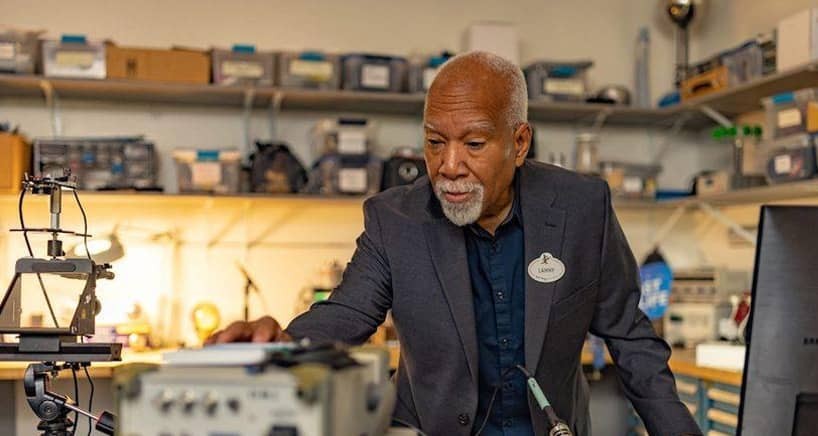
With more than 100 patents and counting, there’s no stopping the creative mind of EE alumnus, Lanny Smoot.
One afternoon in 1972 at Brooklyn Tech, the principal’s voice came over the intercom: Lanny Smoot, please report to the principal’s office!
When Smoot got there, he saw an unusual sight.
“There was a guy — an African American guy — wagging his finger at the principal, really bawling him out,” said Smoot, a high school junior at the time.
When the man noticed Smoot, he shifted his attention.
“Lanny! Where have you been?”
The man, Jim Stewart, was a recruiter for Bell Laboratories’ scholarship program, and he wanted to know why Smoot hadn’t shown up at any of their information sessions.
“I wound up having a scholarship to Columbia and a summer job at Bell Labs,” Smoot said. “They also sent me back to Columbia to get my master’s degree in electrical engineering.”
It was the beginning of a storied career. After graduating from Columbia Engineering in 1977 with a BS and in 1978 with an MS — both in electrical engineering — Smoot would go on to serve as an executive director at Bell Labs and join the Walt Disney Company as an Imagineer.
He’s been awarded 106 patents (with more in the works). In January, Smoot was elected to the National Inventors Hall of Fame. He’s only the second Disney employee to win the award — Walt was the first.
“I learned my engineering at Columbia University, and that stood with me all my life.”
Image Carousel with 5 slides
A carousel is a rotating set of images. Use the previous and next buttons to change the displayed slide
-
Slide 1: Pictured at the induction ceremony for the National Inventors Hall of Fame. Credit: Lanny Smoot and The Walt Disney Co.
-
Slide 2: Lanny Smoot in his Columbia Engineering regalia. Credit: Lanny Smoot and The Walt Disney Co.
-
Slide 3: Credit: Lanny Smoot and The Walt Disney Co.
-
Slide 4: Lanny Smoot working on a fiber optic receiver at Bell Labs. Credit: Lanny Smoot and The Walt Disney Co.
-
Slide 5: One of Lanny Smoot’s most recognizable inventions is Madame Leota in Disney’s Haunted Mansion attraction. Credit: Lanny Smoot and The Walt Disney Co.
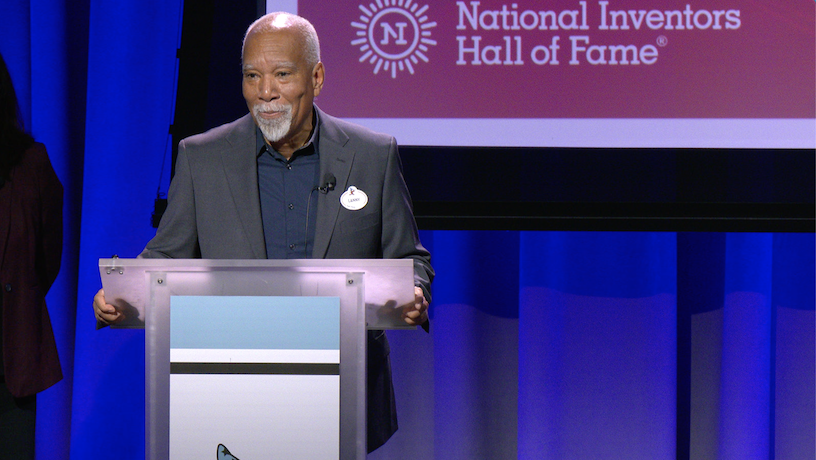
Pictured at the induction ceremony for the National Inventors Hall of Fame. Credit: Lanny Smoot and The Walt Disney Co.
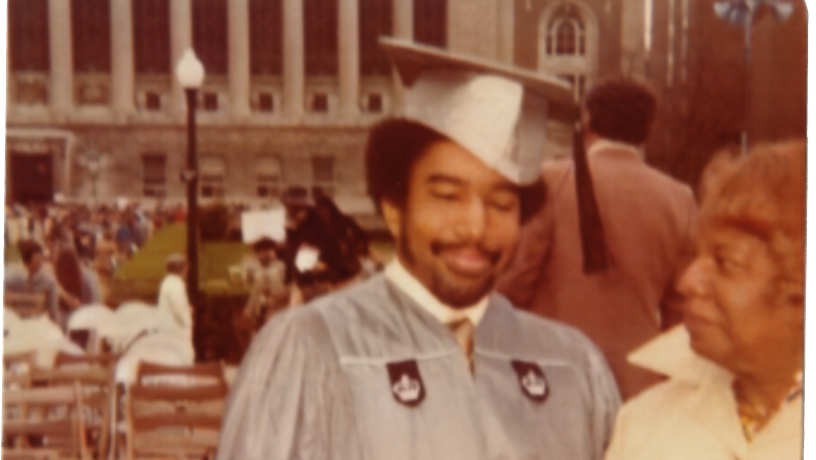
Lanny Smoot in his Columbia Engineering regalia. Credit: Lanny Smoot and The Walt Disney Co.
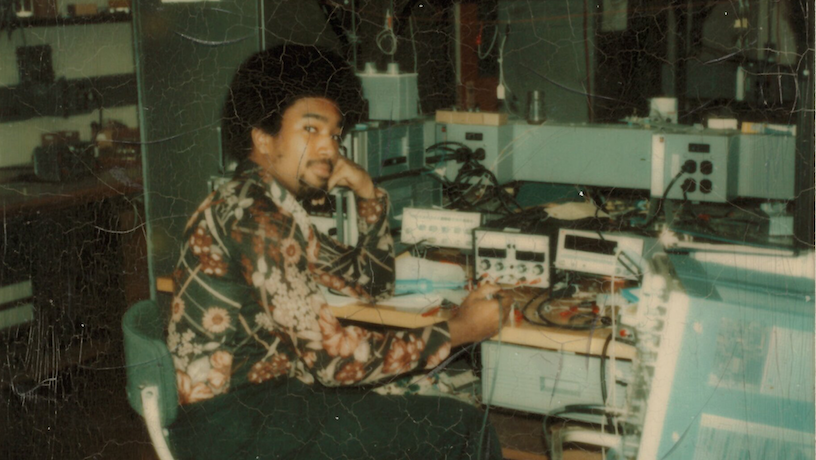
Credit: Lanny Smoot and The Walt Disney Co.
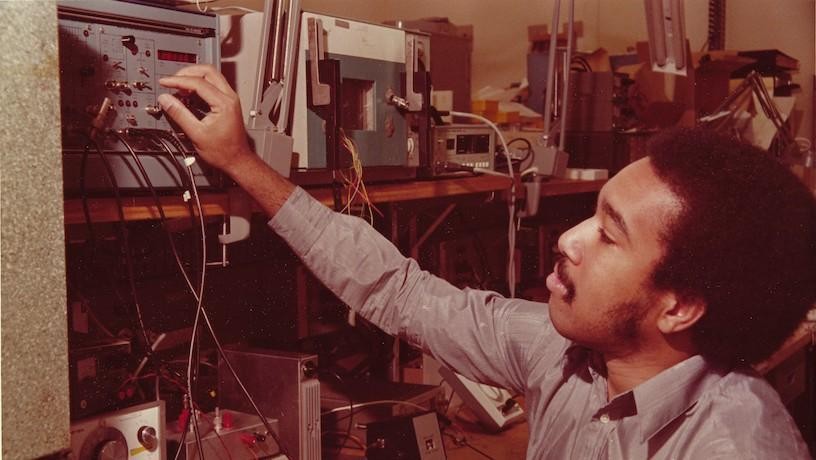
Lanny Smoot working on a fiber optic receiver at Bell Labs. Credit: Lanny Smoot and The Walt Disney Co.
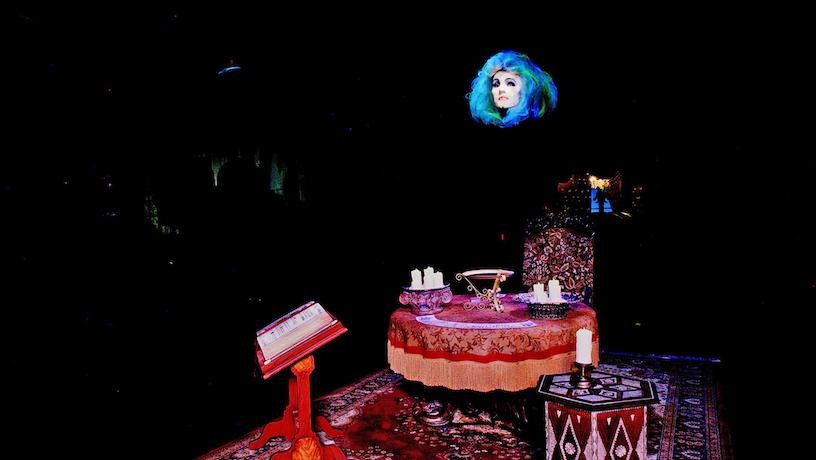
One of Lanny Smoot’s most recognizable inventions is Madame Leota in Disney’s Haunted Mansion attraction. Credit: Lanny Smoot and The Walt Disney Co.
An engineer from the start
When Smoot was five years old, his dad came home one day with a battery, a bell, lightbulbs, and some wire.
“He was an itinerant inventor, not a professional,” Smoot said. Despite not having any training, he could fix TVs and build gadgets to use around the house.
Before long, Smoot’s dad had the bell ringing and the lights shining.
The experience, which is his earliest memory, “lit my entire career,” Smoot said.
Smoot would always take things apart but unlike many other nascent engineers, he wasn’t trying to figure out how they worked. Instead he wanted to build new things. One of his proudest boyhood creations was a unicycle built from an old tricycle and the seat from a bike.
Unicycling is something he’s maintained to this day.
“If I’m proud of something here at Disney, it’s that I don’t need a lot of money to create pretty cool prototypes of new inventions.”.
From telecommunications to the Magic Kingdom
During the summers during his undergraduate years, Smoot worked at Bell Labs, eventually working his way up to designing complex circuits and systems. “It wasn’t just a summer job, it was actual work contributing to telecommunications.”
After graduating from Columbia Engineering, Smoot went full-time at Bell Labs, where he designed some of the first fiber-optic transmission systems that were used widely in the Bell System. He would later design some of the first broadband systems and early videoconferencing systems.
His career at Bell Labs spanned 22 years. In 1997, while attending a trade show in Las Vegas, Smoot was approached by an inquisitive man. Smoot showed him one of his latest inventions: a system that would let viewers control which camera angles they saw on their home TV. The man said he was interested in using the system to view animals in their enclosures.
When Smoot asked what company could possibly need to do that, the man replied that he was from the Walt Disney Company.
“Turns out, he was actually talking in the code we use at Disney to make sure we don’t give away what we’re really doing,” said Smoot.
In fact, the company was interested in using the technology with free-roaming animals at Disney’s Animal Kingdom theme park in Florida.
“Disney liked the invention, but they liked the inventor more,” Smoot said. He joined Disney in 1998 and ran Disney’s research facility in East Hampton, Long Island. When his research and development group relocated to Glendale, CA, a couple of years later, Smoot moved to the west coast.
A legendary engineer with Columbia roots
Smoot has fond memories of the community he built during his time at Columbia. A resident of John Jay Hall, he enjoyed the company of a tight-knit group of friends, including fellow Class of ’77 alumni, Doug Rowe, Gary Foster, Craig Thompson, and Sam Scipio. They spent time in the restaurants on Broadway and studied at McIntosh, a student center that used to stand on the Barnard campus.
“The folks I happened to mention were Black, and were great scholars. We wound up doing our physics and our electronics and our computer science courses together,” Smoot said. “Having those supporting folks no matter what was amazing there.”
Today, Smoot is a Disney Research Fellow and the company’s patent leader. Some of Smoot’s most recognizable inventions include the technology that makes Madame Leota’s head fly around the Haunted Mansion attraction in her crystal ball and the water harps found in the Journey of Water attraction at EPCOT. He also holds the patent for the extendable lightsabers used recently in Disney attractions.
After 25 years with the company, Smoot isn’t slowing down. In fact, he’s more excited than ever about his latest project: the HoloTile Floor.
“It’s the world’s first omnidirectional treadmill floor,” he explains. “Every part of the floor can move anything or anybody that’s on it. It can counter your walking movement, so you could walk on it forever.”
When someone uses a virtual reality headset — whether at home or at a Disney attraction — Smoot’s invention will ultimately allow them to move through virtual space without having to worry about the physical space around them.
“We finally have the thing that was always missing from virtual reality,” he said. “I think it’s going to change the world.”